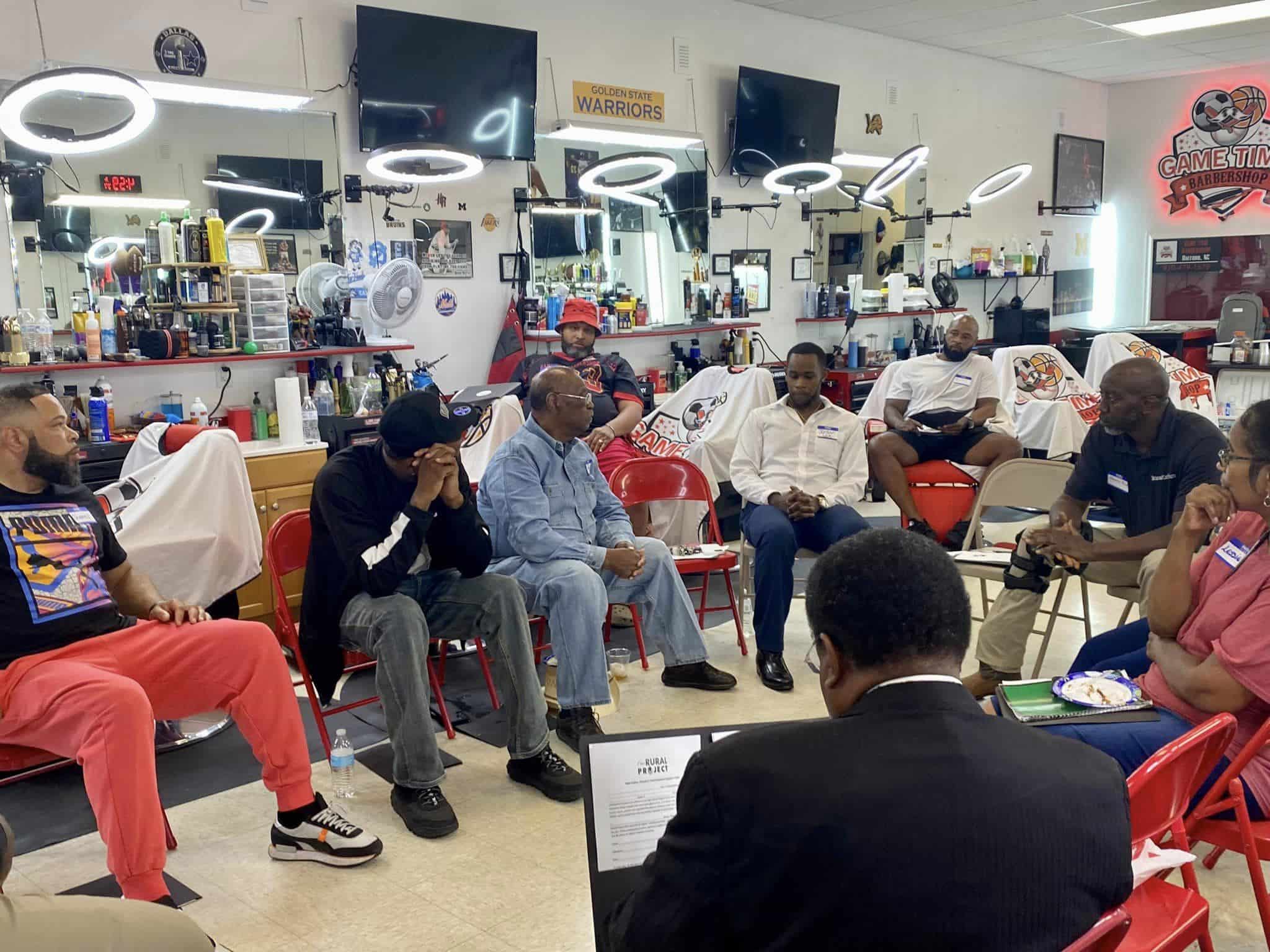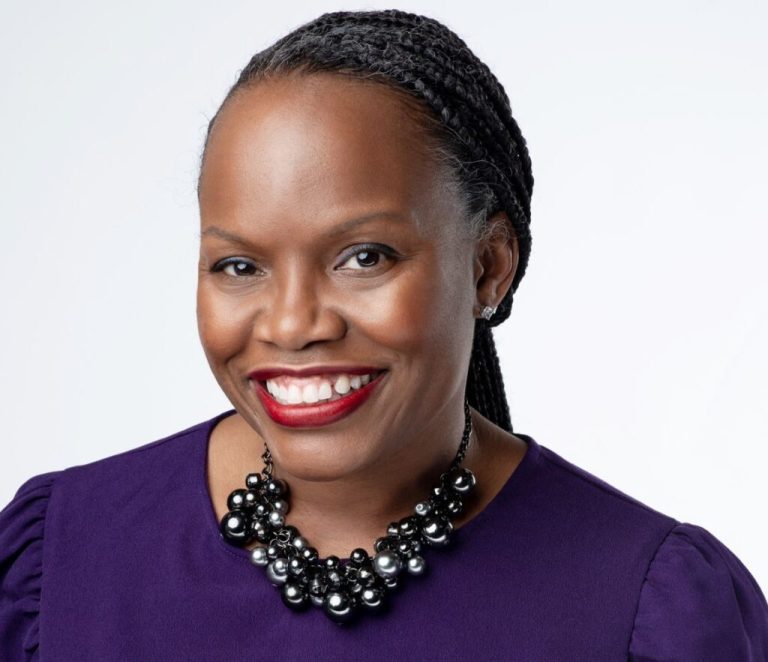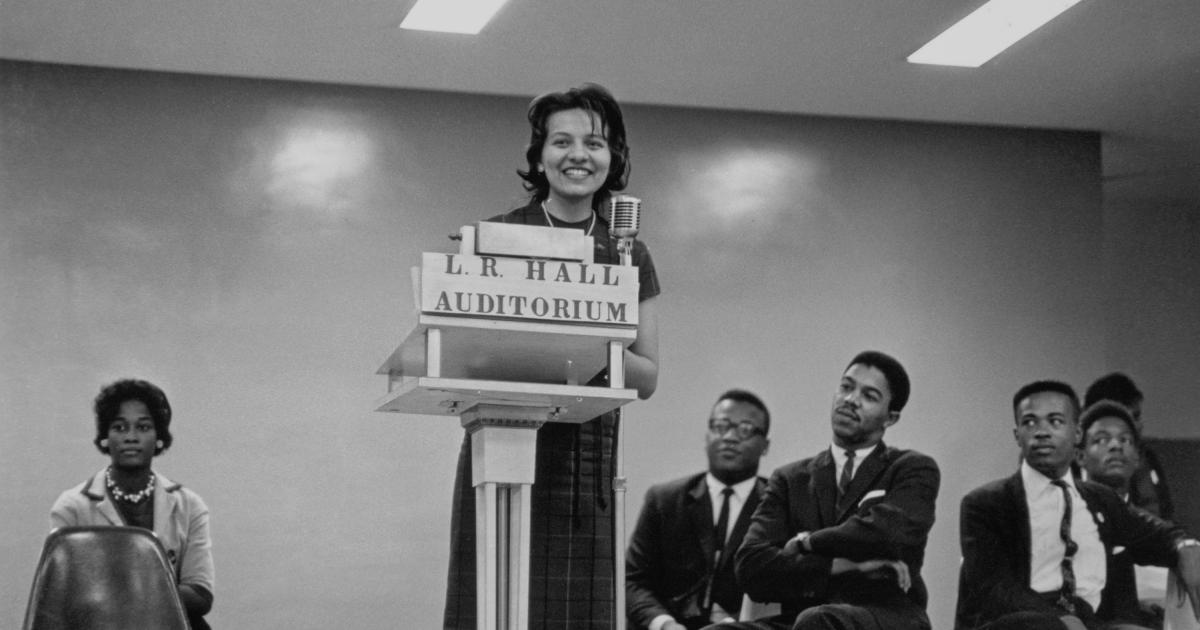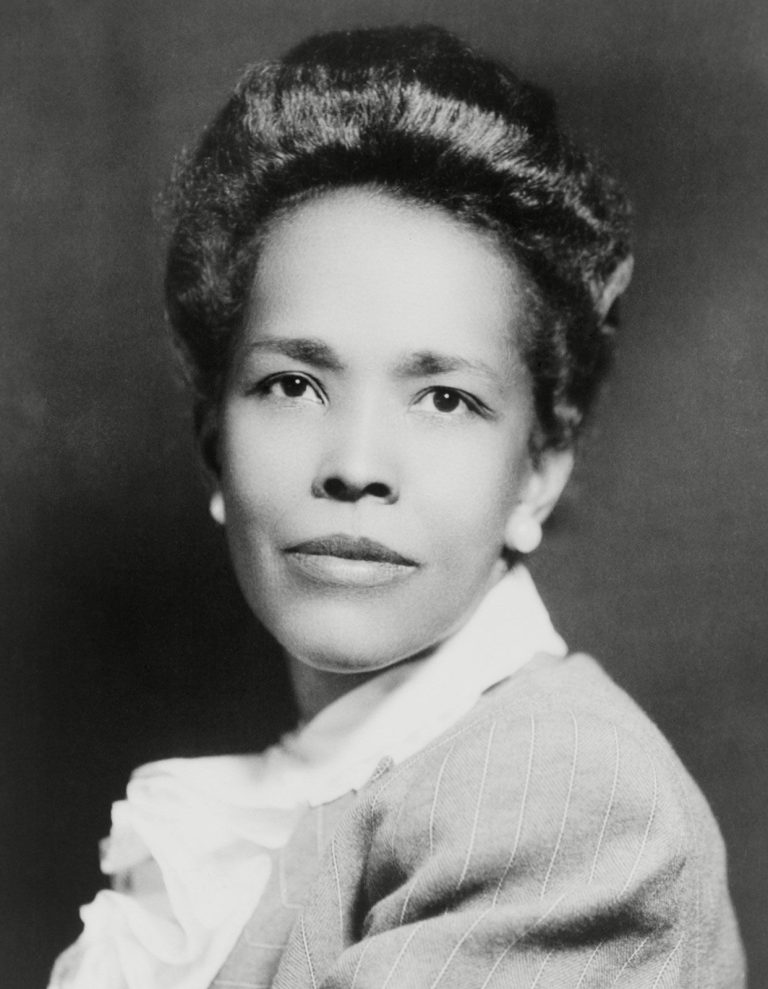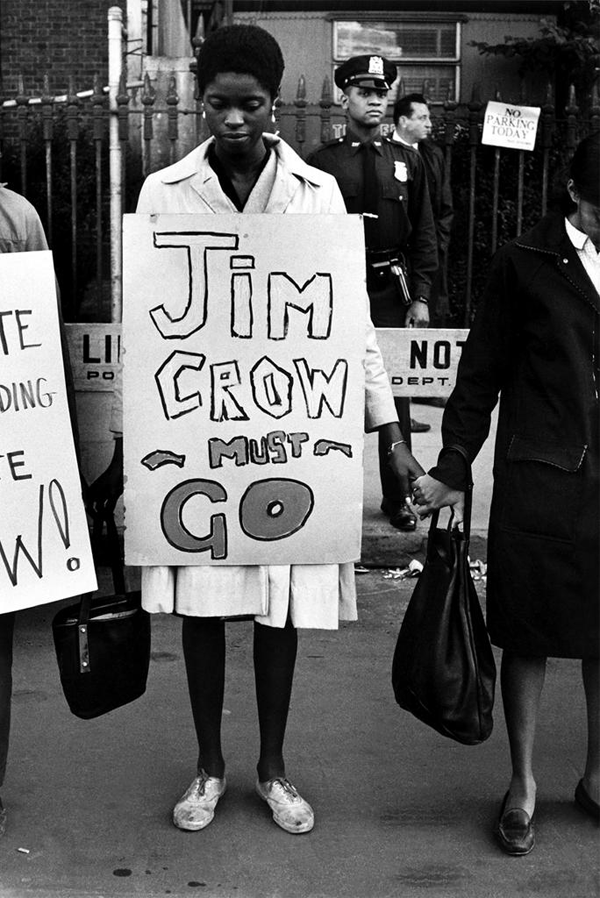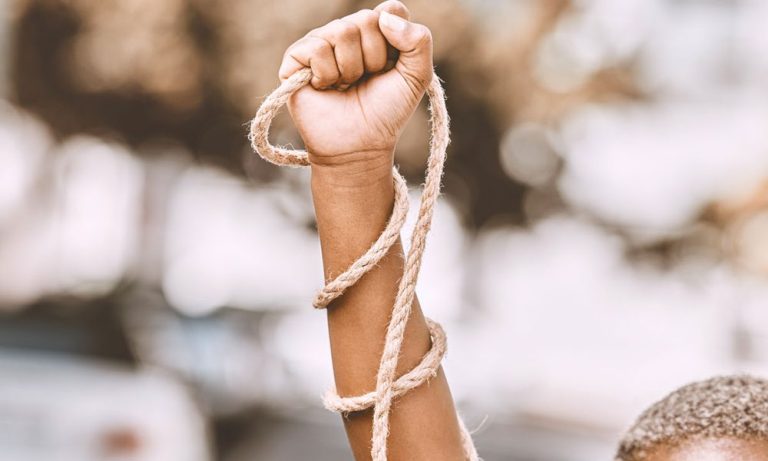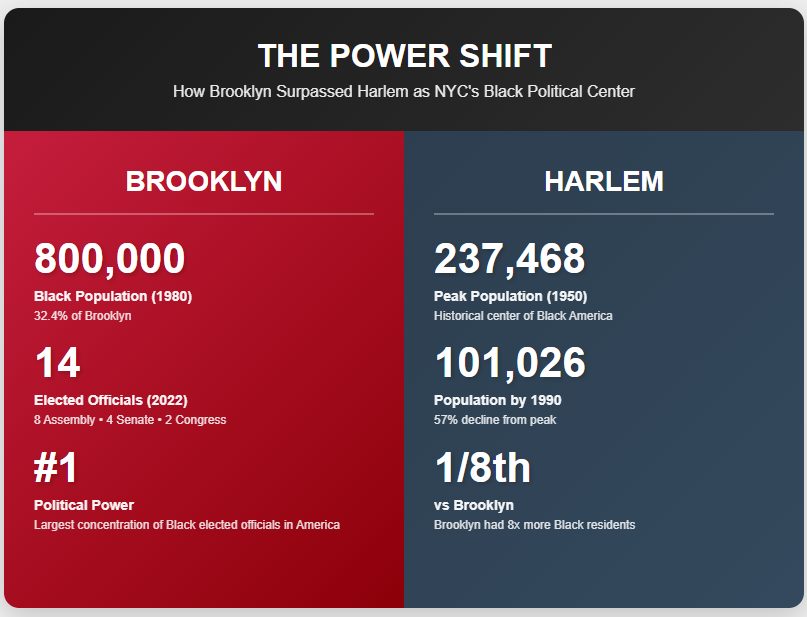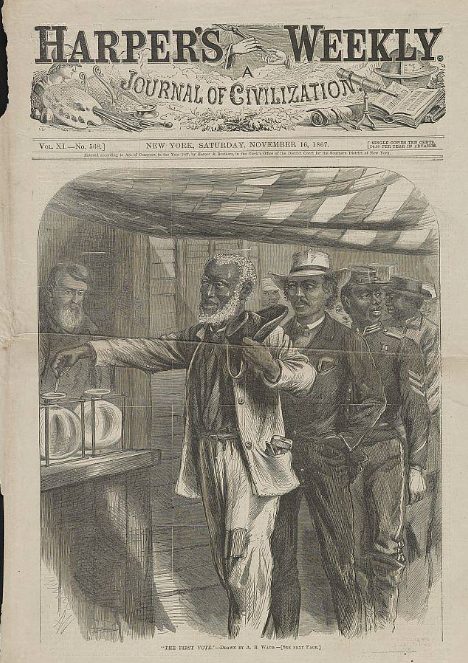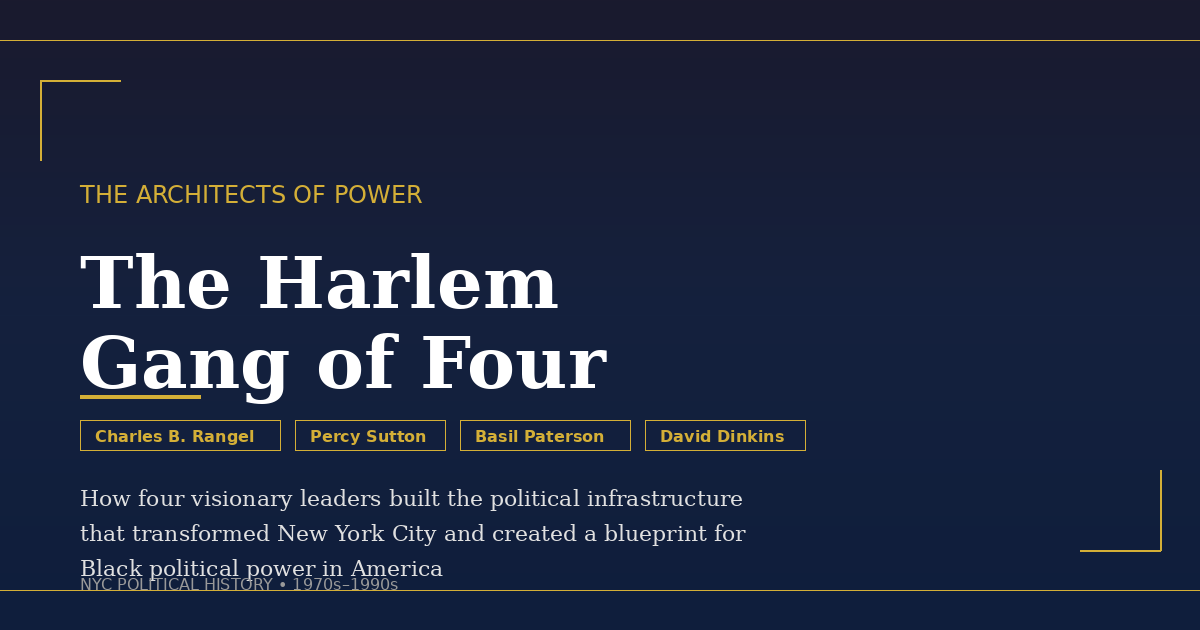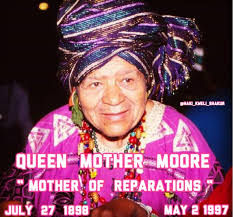
Queen Mother Moore Over 80 Years Active in The Struggle
Queen Mother Moore – African American
Reparations Leader/Garveyite
At the time of her passing, at age 99 on May 2, 1997, Queen Mother Audley Moore held the distinction of being the longest-serving African American female activist in the movement for the liberation of African people in America. She was born as Audley, to Ella and St. Cry Moore, on July 27, 1898, in New Iberia, Louisiana. Her grandmother, Nora Henry, was born into slavery, the daughter of an African woman who was raped by her slave master who was a doctor. Her grandfather was lynched before his wife’s eyes leaving Nora Henry with five orphaned children of whom Ella Johnson, mother of Queen Mother Audley Moore, was the youngest. Ella, who died in 1904, often talked about how the police in and around New Orleans used to routinely round up Black men for vagrancy if they were just standing on a corner talking. She also told how the police would raid restaurants and arrest all the Black men only to return later and rape the Black women.
Queen Mother Audley Moore Joined Struggle at Age of 15
It was around age 15 that Moore made the decision to jump into the struggle that she saw going on around her. Her decision turned into a lifelong search for answers about how to change things.
Marcus Garvey moved to Harlem in 1916. By now a formidable public speaker, Garvey spoke across America. He urged African Americans to be proud of their race and return to Africa, their ancestral homeland and attracted hundreds of thousands. He also campaigned against lynching, Jim Crow laws, denial of Black voting rights, and racial discrimination.
Queen Mother Audley Moore Joins Garvey Movement
Garvey’s dynamism caught the eyes and ears of Queen Mother Moore. She left Louisiana for Harlem during the Harlem Renaissance of the 1920s. She joined Garvey’s UNIA movement and became a leader until the movement’s collapse in 1927.
Third Grade Formal Education
Queen Mother Audley Moore completed only the third grade of her formal education. Her struggles began between the tender age of twelve and fifteen fighting the advances of white men in the South. For seventy-seven years Queen Mother was an active participant in the struggle for the human rights and liberation of all African people throughout the world.
Revolutionary Black Nationalist Pan Africanist
Mother, as she was affectionately called by close comrades, was a die-hard revolutionary Black nationalist and Pan Africanist. Her record of leadership and activism is staggering. She joined the Communist Party in 1933, because it rallied around the idea of self-determination for Blacks. At the time (during the 1930’s) when the Communist Party carried the mantle for the self-determination and liberation of African Americans, Queen Mother rose to become a member of the party’s Central Committee. In those years she worked closely with renowned cultural artists and activists like Paul Robeson and Lena Horne. She ran as a Communist for New York’s state assembly in 1938. She resigned from the Communist Party in disillusionment after they changed their position on self-determination of African Americans in the South’s Black Belt.
Saw Black People as ‘Overseas Africans’
Queen Mother was a trailblazer, correctly educating many activists on self-identification, long before it was popularly acceptable to refer to Black people in the US as African Americans. Having worked very closely with her (even residing with her to keep a protective and watchful eye over her in her later years), I got to know her quite well. I recall her favorite saying. She would turn to me and say,
“If a cat had kittens in the oven, would you call them biscuits?”
I was stunned, not knowing what on earth she was talking about. Then she would make her point. “Of course not. They’re still kittens. Then she would say,
“Well, if an African has offspring in America, what are they? They’re still Africans. We’re nothing more than OVERSEAS AFRICANS.”
Paved the Way for use of the term African American
Her point was irrefutable. African American activists close to Queen Mother routinely utilized the terms, ‘New African’ and African American long before Jesse Jackson played a critical role in the popular acceptance of those terms during his 1984 presidential run.
Negro is a State of Mind
Queen Mother had a powerful voice for speaking against the injustices suffered by Black people in the US. Among her other memorable quotes,
“They not only called us Negroes, they made us Negroes – things that don’t know where they came from and don’t even care that they don’t know. Negro is a state of mind, and they massacred our minds. “
‘Oppression-Psycho-Neurosis’
Another Queen Mother quote is that “The condition of Black people in the US can best be described as ‘Oppression-psycho-neurosis,” a term she coined. The treatment for that condition, she would say, is to join the Black Liberation Movement and struggle for your own freedom.
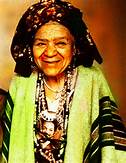
Queen Mother Audley Moore organized rent strikes against abusive landlords, came to the aid of domestic workers in New York City, and agitated for Black political representation, prisoner rights, and the integration of the armed forces.
Queen Mother Audley Moore was present when former South African president Nelson Mandela came to New York in the summer of 1990, and she was one of only five invited female speakers to address the historic Million Man March in October 1995. Queen Mother, or ‘Mother’, as those close to her, referred to her, organized on many fronts, from the great influenza epidemic of 1918 in Muscle Shoals, Alabama, where she worked as a volunteer nurse, to the United Nations, where she presented petitions in the 1950s charging genocide and demanding reparations for descendants of former slaves.
Partial List of Queen Mother Audley Moore Accomplishments
Queen Mother Audley Moore was an active leader and participant in many of the historical struggles which we have read about in history books, and many not written about as well. Among others, she was :
- (Along with her sister Eloise) A teacher to Malcolm X, helping to further the evolution of his revolutionary black nationalist consciousness.
- A founder and member of the central committee of the African People’s Party, one of the more disciplined revolutionary Black Nationalist organizations to emerge from the Black Power era of the late 1960s.
- The founder and president of the Universal Association of Ethiopian Women.
- A life member of both the Universal Negro Improvement Association and the National Moorish Council of Negro Women.
She joined Marcus Mosiah Garvey’s Universal Negro Improvement Association and African Communities League (UNIA) while living in Louisiana.
She participated in Garvey’s first international convention in New York City, owned stock in the Black Star Line, and came to New York when the UNIA launched the Black Star Line’s first ship. - The founder of the Committee for Reparations for Descendants of U.S. Slaves.
- A founding member of the Republic of New Africa to fight for self-determination, land, and reparations.
- A founding member of the Commission to Eliminate Racism, Council of Churches of Greater New York. In organizing this commission, she staged a twenty-four-hour sit-in for three weeks.
- A founder of the African American Cultural Foundation, Inc., which led the fight against the usage of the slave term “Negro.”
Joined the Republican Party, found them racist, left, and joined the Communist Party to fight the Scottsboro Boys’ imprisonment. - Led the fight to end Jim Crow in big league baseball.
- Organized the community with Captain Hugh Mulzac as chairman and the Reverend Adam Clayton Powell, Jr. as co-chairman. Later realizing the fallacy in this, she apologized to her people.
- Led protests against the Apollo Theatre for showing racist shows and led protests against the Alhambra Theatre for showing a white man as Hannibal.
- Helped organize the CIO (Congress of Industrial Organizations – later joined with the AFL to become the AFL-CIO) unions and the Work Progress Administration. She forced the WPA to employ black women (who were previously relegated to domestic work) on sewing projects.
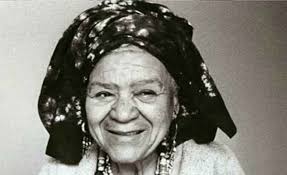
- Tried to organize a domestic workers union.
- Was arrested three times during her struggle-first for defending the rights of African American children to use the public Colonial Park pool without bringing along their birth certificates; another time for defending a peddler from arrest for selling tomatoes to support his seven little children; the third time for trying to register people to vote in Green County, New York.
- Led the fight with Assemblyman William Andrews, the Reverend Ethelring Brown, and Ludlow Werner to get a congressional district in Harlem in the 1930s.
- Helped to organize the Maritime Union under Ferdinand Smith.
- Led the fight to break the Jim Crow policy in the Coast Guard and became the first black stewardess to be hired. She helped stranded seamen in London and held a mass meeting in 1946 in a hotel lobby in London for the management’s refusal of accommodations due to racism.
- Campaigned for medical aid and funds for Ethiopia after the Italians attacked. She organized 500 nurses to sterilize sheets that were collected from laundries for bandages for the wounded Ethiopian soldiers.
- Investigated the condition of little girls, ages twelve to fourteen, who gave birth while in a mental institution in Louisiana. The girls had been raped by their white male attendants.
- Was encouraged by Dr. A.L. Reddick and Dr. Mary McLeod Bethune, both of whom were eminent educators, to take to public speaking in defense of her people’s liberty. Before this, she only spoke at street meetings from a box or a ladder on the corner of 125th Street and 7th Avenue.
- Organized the first rent strike on Sugar Hill (Harlem, NY) in 1930 and restored tenants to their apartments after having been evicted.
- Supported the Mau Mau rebellion in Kenya and took a delegation to the British Embassy to protest the ultimatum given to the Mau Mau to surrender or be annihilated.
- Fought to save from execution the Martinville Seven and helped to organize street meetings and demonstrations. She helped to free Mae Mallory imprisoned for defending herself from an attack of the KKK in Monroe, North Carolina.
- Presented a petition to the United Nations in 1957 for self-determination of African Americans and against genocide. She presented a second petition in 1959 to the United Nations for land and reparations.
- She toured throughout the country by car in 1962 begging gas from gas station to gas station to alarm our people to prepare for our Emancipation Proclamation Centennial by presenting a judicial document for reparations and self-determination proclaiming us a non-self-governing nation.
- Organized a soup kitchen in Harlem for African students after learning two students had died from malnutrition after they received their Ph.D.
- Helped to organize Africa House in New York City with Mrs. Mattie Hunter for African students.
- Participated in the North American Regional Planning Conference (held at Kent State University in 1973) leading up to the Sixth Pan-African Congress. In 1974, she attended this international Congress in Dar-es-Salaam, Tanzania. This Congress was the first-ever international meeting of African people held on the soil of Mother Africa.
- At the request of Dr. Mary McLeod Bethune, she became a life member of the National Council of Negro Women.
Was the founder and president of the Harriet Tubman Association. - Helped to organize the Unemployed Councils when millions were on the brink of starvation.
Presented a demand for reparations to President Kennedy which caused him to say: “Ask not what this country can do for you, but what you can do for it.”

Curated from news one, other published material, personal knowledge, and biographical by Deloise Naewoaang Blakely who became a personal assistant to Queen Mother Audley Moore in her later years.
References:
Reparations for slavery debate in the United States – Wikipedia, the …
African American topics … 1 U.S. historical context; 2 Proposals for reparations …. M.J. Divine, better known as Father Divine, was one of the earliest leaders to …
Originally from Jamaica, Marcus Garvey became a loyal leader of the Black … Garveyism would eventually inspire others, from the Nation of Islam to the Rastafari movement. … dedicated to promoting African-Americans and resettlement in Africa. … Senator Theodore Bilbo of Mississippi to promote a reparations scheme.
Black Reparations (Stanford Encyclopedia of Philosophy)
27, 2001 — The U.S. government’s first reparations plan to compensate African- Americans for the legacy of slavery was 40 acres and a mule apiece — that was …
Dec 14, 2010 … And African Americans are claiming reparations for the injuries of slavery and its aftermath. Our subject is the last of these demands for …
Reparations for slavery is a proposal that some type of compensation should be … reparations and actual land reparations received by African-Americans which …
Reparations – Issues – U.S. Congressman John Conyers, Jr.
In January of 1989, I first introduced the bill H.R. 40, Commission to Study Reparation Proposals for African Americans Act. I have re-introduced HR 40 every …




